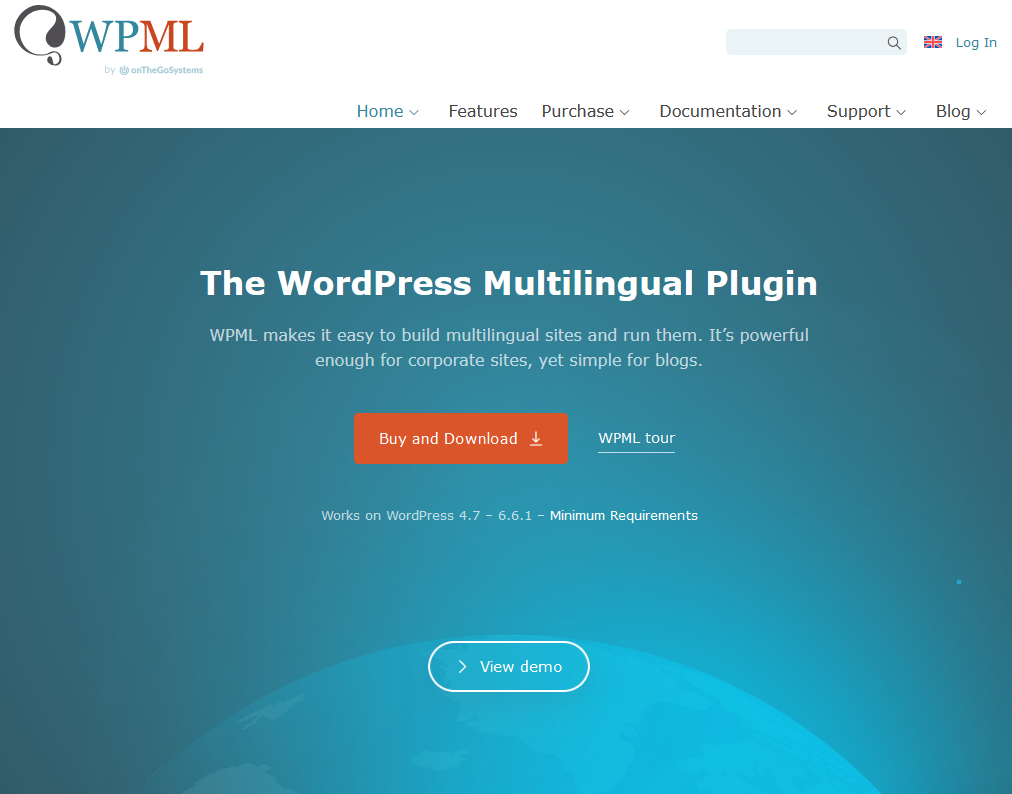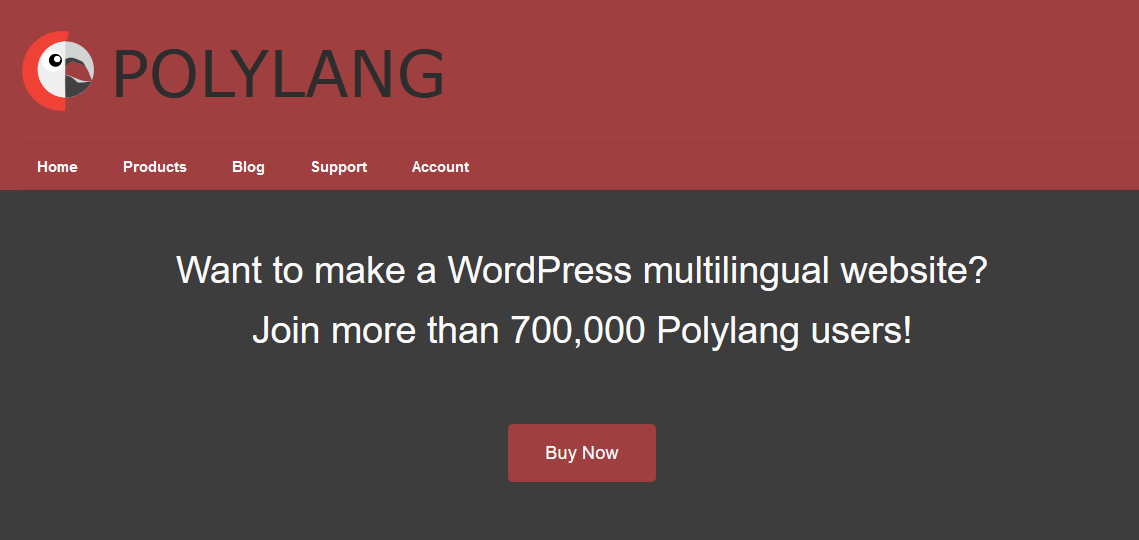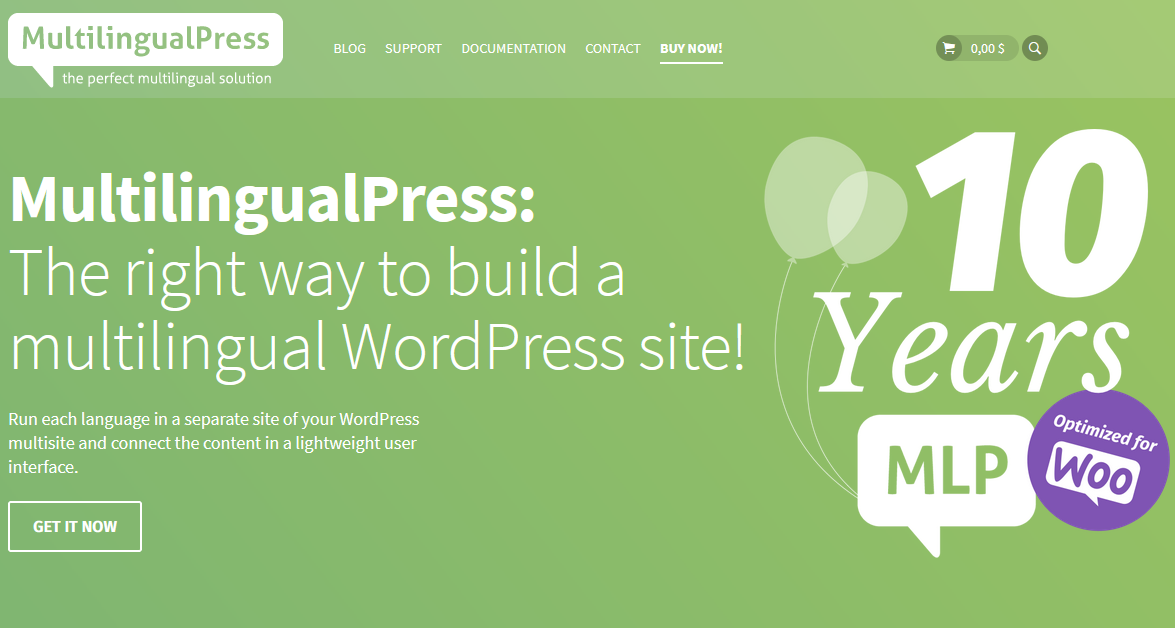By default, WordPress – both the .com and .org versions – don’t offer support for bilingual or multilingual versions of a website. If you aim to cater to more than one language, such as a UK site incorporating German or a dual Swedish-Dutch website, you will need to utilize some form of a plugin.
Tips for a Multilingual WordPress Setup
You have two primary options to create a WordPress site with multiple languages. One approach is to use WordPress Multisite. WP Multisite is a built-in feature that is part of the core WP installation. It enables you to create a network of interconnected websites, all operating on the same installation. This is mentioned here for one reason: to advise against its use. Why shouldn’t you utilize WP Multisite for multilingual versions of the same website? The answer is that it simply isn’t intended to manage different languages or the plugins that support them. Translation and multilanguage management plugins for WordPress are designed to function with the core WP installation, and they might not perform as well with Multisite.
The effective way to create a multilingual WP site is to employ one of the numerous translation plugins available. These plugins make translating your content a bit easier, but more importantly, they translate the core functionality of WordPress so that users in other languages can navigate effortlessly.
Plugin Choices
There are several excellent options to choose from when you’re searching for a WordPress translation plugin. They assist you in translating your content, your site, and your metadata into other languages. Here are the top options:
WPML

WPML – This is the most comprehensive and valuable of the translation plugin options, and it’s consistently kept up to date. It supports 65 languages and has a wizard to help you configure your site. It also features a surprisingly effective translation engine. So what’s the downside? Why isn’t this the sole plugin on the list? The answer is it’s not free. The most affordable option is $29 and doesn’t provide you with ecommerce support, widget translation, multi-user interface translation, or CMS navigation, among other things. For access to nearly everything else, you need the $79 version of the plugin. If you’re committed to a multilingual WordPress site, you can’t get by with the cheaper version. On the plus side, renewing every year is less expensive; the $79 version only costs $59 annually after the first year. You can also opt for the $159 version that supports unlimited sites and renews at $119 annually. After four years of the mid-range version, the lifetime option pays for itself.
Polylang

Polylang – This plugin is primarily designed for navigation, metadata, and interface translation. It doesn’t integrate an automatic translator or a human translation service at all. However, what it does translate, it supports over 100 languages.
Multilingual Press

Multilingual Press – A plugin that operates in a manner similar to Multisite, with support for over 170 languages. It works with an automated translator, but the quality of the content can be inconsistent. It has a paid version that adds more features, including full site duplication, syncing between multiple sites, and user settings.
Dividing Content
How do you want to display your translated content? You have three main options:
- Option 1: One post on one blog. Imagine a standard blog. Each post will have content, first in one language, followed by a translation in a second language. This can work well for some sites, but as your content grows or as you want to add support for a third language, it becomes overly cluttered.
- Option 2: Two posts on a single blog. This is how most multilingual plugins operate. You set up one blog, and for each post you write, you publish a second post with the same content translated into a different language. You can link from one post to its alternate language versions, and you can include a navigation link that filters all languages except one from the display.
- Option 3: Multiple posts on multiple sites. This is the multisite equivalent option, where you create sites for each language you want to use, publishing translated content to each when you write it, keeping everything synchronized. Typically these sites will have navigation links for each language, directing you to the other site version on a subdomain or subdirectory.
Additional Considerations
- Metadata translation. Don’t forget that when you’re translating content, your title and description need to be translated as well. SEO isn’t an English-exclusive practice. You’re going to face competition in both languages, and you’ll want to implement strategies to optimize both languages accordingly. Some plugins will help you translate metadata; others will just provide fields to fill in with your own manual translations.
- File translation. Remember that if you’re uploading images to accompany your posts, you’ll need translated versions of those images as well. This is especially crucial for any image that contains text. Textless images just need to have their alt text optimized for the new language for each post.
- Widget translation. If you’re using additional plugins or widgets, you may need to translate their displayed content for users. There’s no simple way to do this outside of plugins like Widget Logic, which allows you to manually edit plugins to specify the language. Note that if you’re manually editing widgets, you need to ensure you aren’t breaking them.
- Theme translation. Theme options and navigation must be translated. Occasionally, you will find a theme that doesn’t work with your translation plugins. WPML is the best option if you can afford it, as it allows you to translate and sync navigation across multiple sites. Otherwise, you may need to work manually to translate a theme.
- Language detection. Ideally, when a user visits your site, it will detect their language and automatically set the closest available option. From there, you need to offer a visible language switcher to allow users to select their language of choice.
A Note on Translation Quality
There are four ways you can translate content for your blogs. Make sure you choose the right option based on the amount of time invested and the content quality you want for your site.
- First, and least effective, is the Google Translate option. Using a tool like Google Translate will go word by word to translate the exact wording of the content, but it doesn’t typically convey meaning as well as you may desire. It will fail particularly badly when using colloquialisms or slang.
- Second is the plugin automatic option. This isn’t much better and is sometimes worse than the Google option. WPML has a higher quality system, but most other translation plugins don’t.
- Third is the affordable human translation. Visit Fiverr and hire a translator. The content you get back will be serviceable, but it may not be great.
- Fourth is the high-quality human translation. You get what you pay for, and a high-quality translator can command a price for their services. It’s worth it, though, if you plan significant growth in your alternate languages.
How The SEO Impact Can Help
Creating a multilingual WordPress site can be a game-changer for reaching a global audience, but it requires the right tools and expertise. Whether you choose WPML, Polylang, Multilingual Press, or another plugin, each offers unique features to help you manage translations, SEO, and user experience across different languages. However, setting up and managing these plugins can be complex, particularly for larger or more intricate websites.
We have extensive experience in building and optimizing multiple multilingual WordPress sites. Hire The SEO Impact to configure your next WP multisite with no hassle and ensure your multilingual setup is done right from the start.
- Outbound Links: Learn How They Help Your Website - August 19, 2024
- How to Build a WordPress Site with Multiple Languages - August 12, 2024
- Poorly Designed Websites Impact Rankings: Here’s Why - August 9, 2024